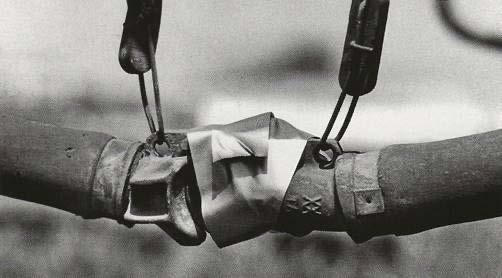
Today railroads spend millions of dollars on ribbon rail, expensive locomotives, cutting edge communications among other business needs. But there’s still a place for a roll of handy-dandy duct tape. Many uses, as you can see one
example in the picture above. In this case, if air pressure is not maintained in the “trainline” as it’s called, the brakes take hold. Less than 50 cents worth of tape will help keep the hose connections from parting. Air hoses for the
braking system, like those above are found just below the coupler connecting every car in a train.
Many experienced operating train crewman (or woman), pack around a roll, finding a wide variety of uses: 1) weather-stripping around damaged or ill-fitting cab doors on locomotives. A skilled crewman will apply it in a manner that would allow the door to be opened and closed without tearing or pulled loose. 2) It works nicely holding paper towel in fashioning a sun visor. 3) An ample amount will even seal a broken trainline to seal a crack. 4) It makes a great shade on a cab light. 5) Duct tape will cover holes in the cab walls to block the cold air from coming in.
George Westinghouse received a patent in 1869 for the Air Brake system, a live-saving invention. His air-brake system, adorns every rail car to this day. Little did he know he would get help from an everyday item from the hardware store. Gary O. Ostlund
